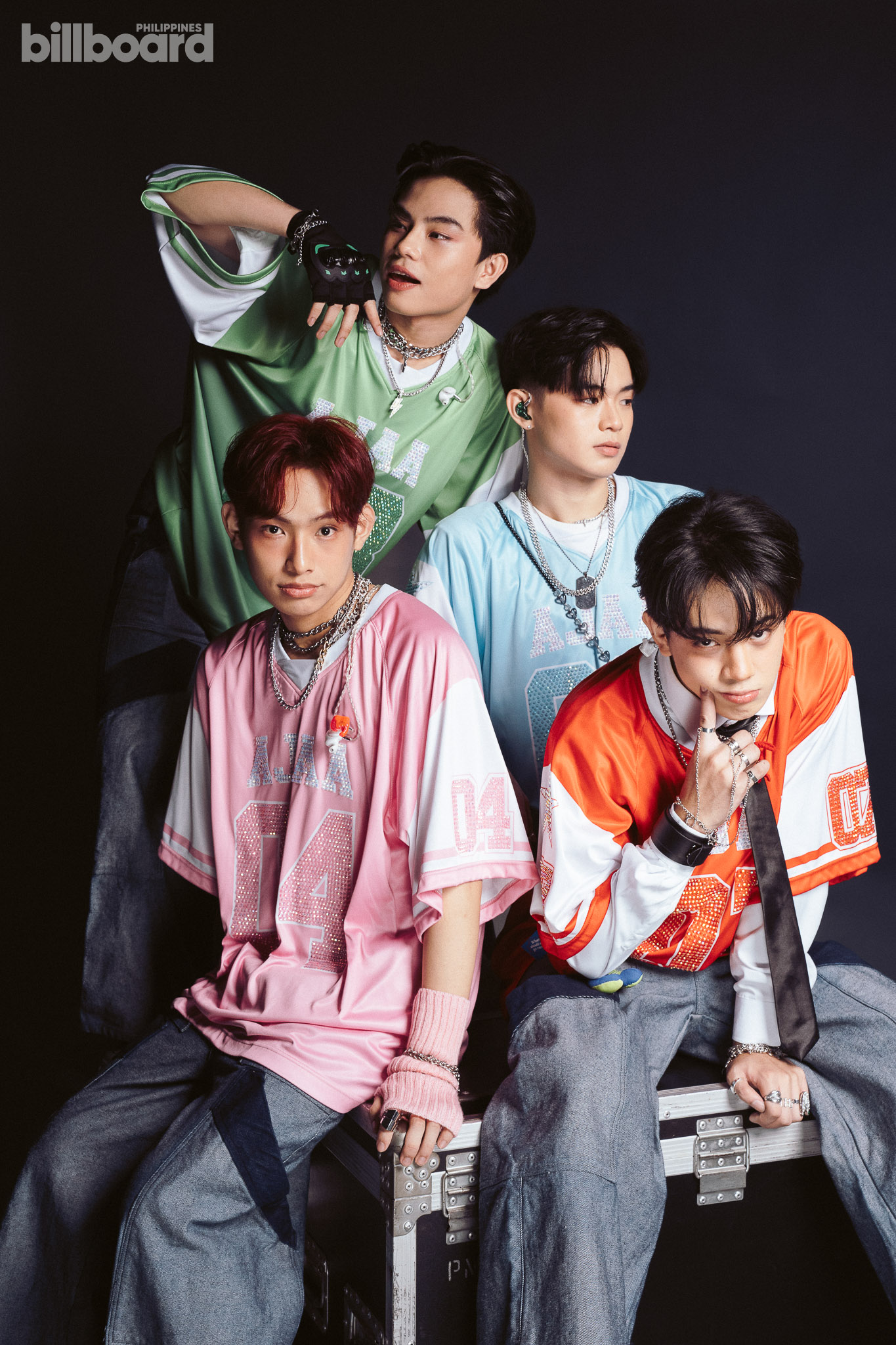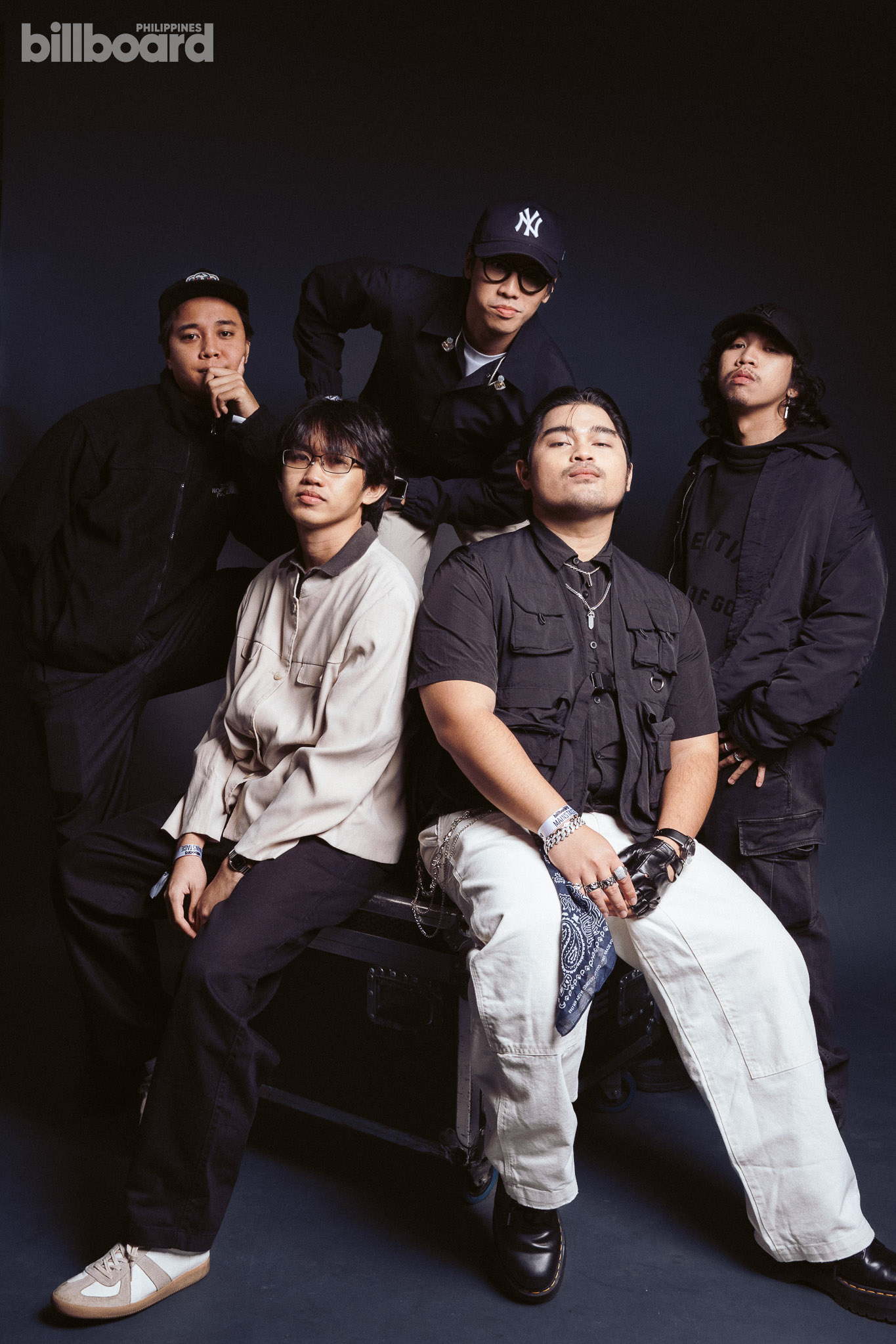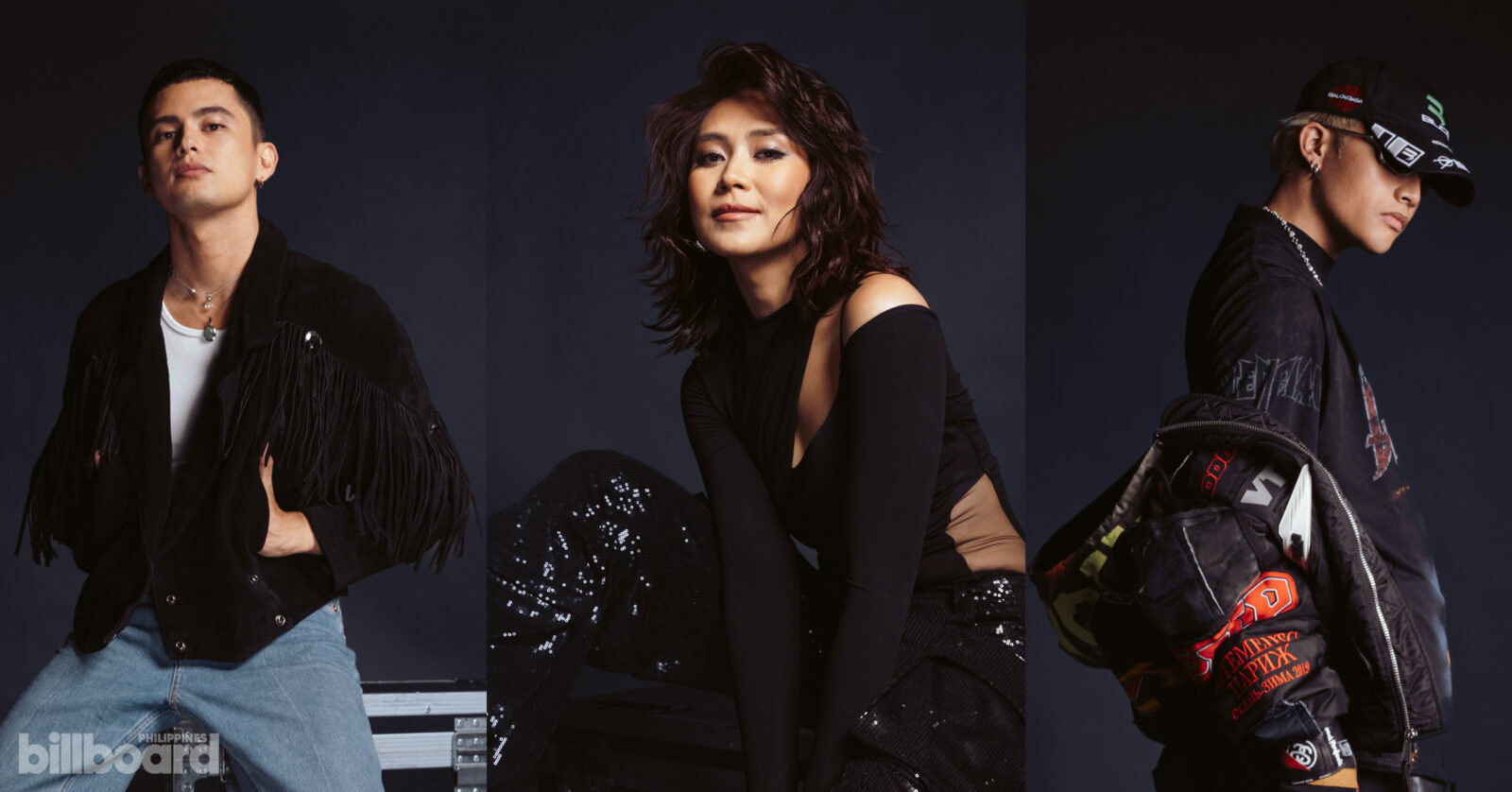2024 has been the year for Philippine music.
At the Billboard Philippines: Mainstage last October 15, artists from various generations and genres came together to celebrate the essence of Original Pilipino Music (OPM). The event was more than just a showcase of talent; it was a reflection of what makes Filipino music uniquely special and a call for more people, especially Filipinos, to support the local music scene.
With these in mind, Billboard Philippines sat down with our Mainstage performers to discuss with these artists why listeners and non-listeners alike should be supporting local music. A uniting thread across these artists’ reflections was how deeply OPM is rooted in Filipino culture, often capturing the emotional and everyday experiences of the Filipino people. Despite coming from different corners of the local scene, everyone highlighted the significance and impact that local music conveys in transcending the simple label of a “genre,” but rather a community and expression of the Filipino heart.

Photographed by Kim Santos of KLIQ Inc. Art direction by Kenneth Dimaano.
Asia’s songbird, Regine Velasquez-Alcasid, noted that Filipinos have a particular fondness for romance even in the mundane. “As a whole, we love romantic songs and we love romanticizing everything,” she said. Whether it’s love between friends or the joy found in small moments, Filipinos turn these emotions into heartfelt music. Velasquez added, “We love writing about broken hearts, unrequited love, and telling stories about crushes that never blossomed.” This ability to find beauty and meaning in everyday life is what gives OPM its sentimental core, allowing listeners to connect to it on a personal level.
In the same light, romantic hitmaker Adie added, “Tayong mga Filipino ay very emotional, when it comes to (these) things — ‘di ko na babanggitin kung ano ‘yon, pero in general, very emotional ang lahat ng Pinoy. And I think, isa sa saving grace and sanctuary na matatakbuhan ng mga Pinoy is music, hindi ba? [We Filipinos are very emotional, when it comes to (these) things – I won’t explain much, but in general, Filipinos are very emotional. And I think, one of the saving graces and sanctuaries Filipinos run to is music, right?]”

Photographed by Kim Santos of KLIQ Inc.
Similarly, KAIA’s Charice pointed out how the heartfelt lyricism of OPM paves way for songs to resonate with all listeners alike. She compared her listening experiences in local songs in light of her experiences listening to Western hits, underlining that the heart of the Filipino is what makes storytelling in Philippine music all the different.

KAIA, photographed by Kim Santos of KLIQ Inc.

Photographed by Kim Santos of KLIQ Inc. Art direction by Kenneth Dimaano.
On the other hand, the Philippines’ Pop Princess Sarah Geronimo underscored the overall importance of supporting local artists. She emphasized that if Filipinos don’t champion their own, no one else will. “It’s like (how) no one will love you if you don’t love yourself. You cannot depend on others to do that for you — it’s the same with our industry. We need to support each other,” she said. The Pop Royalty also pointed out that the Filipino music scene mirrors the country’s unique cultural identity. “Iba ‘yung puso ng Pilipino [Filipinos have a different heart],” she noted, “Iba kasi tayo magmahal, iba din pag nakita mo ng Filipino sa iba’t parte ng Pilipinas, mapa-Japan man, mapa-Edinburgh. Nakikita mo ng serbisyo ng mga Filipino, all out. Laging overflowing ang pagmamahal nila.”
[We love differently, it’s different as well when you see Filipinos in different places apart from the Philippines, whether it be in Japan or in Edinburgh. You can see the service of the Filipinos, it’s all out.]

Photographed by Kim Santos of KLIQ Inc.
Along with the Filipinos’ dedication to service and conveying the Philippine heart in music, consistent chart-topper Maki mentioned that Filipino artists’ diligence and passion also serves as a standout point of the country’s art. “There’s something special about coming from a place where you started with zero, and then you thrived and thrived, and you gave your heart to music. Iba talaga ang nabibigay ng sikap at tiyaga sa OPM. ‘Yon yung pinaka-heart and core natin. We always give our hearts and soul whenever we perform. It’s always the last performance. Para s’akin, that’s what makes us special.” He said.
[There’s something special coming from a place where you started with zero, and then you thrived and thrived, and you gave your heart to music. It’s really different to give hard work and diligence into OPM. That’s our biggest part of our heart and core. We always give our hearts and soul whenever we perform. It’s always the last performance. For me, that’s what makes us special.]

Photographed by Kim Santos of KLIQ Inc.
Bouncing off this beat, for the rising boy group VXON’s Vince, OPM represents the culture and identity of Filipinos. He doted over the fact that local music is entirely unique, as it serves as a representation of our culture as a country. The artist further encourages Filipinos to support local music as a way to connect with the country’s art and creatives. “Music moves people,” added VXON’s Sam, capturing the emotional power that music has to influence lives.

Photographed by Kim Santos of KLIQ Inc.
Connecting with one another through music is made possible through the Philippines’ strong connection with music, as added by the legendary OPM powerhouse Gary Valenciano. “It’s obvious that the fact that there’s probably a karaoke machine in every Filipino household, that music is so deeply ingrained, it runs its part of our DNA.” He pressed. Furthermore, he explained that local music is at a different point to where it was 20 years ago, and that the support for local artists comes more naturally today. In his words, formulas are no longer necessary, some of the best chart-topping hits can be made from the comfort of one’s home.
Coming from a similar standpoint in the industry, R&B hitmaker James Reid mentioned that he used to get asked why people should support local music more often in the past, when he first started making music. With the insurmountable support and attention OPM has gained today, he notes “It’s incredible.”

Photographed by Kim Santos of KLIQ Inc.
Nevertheless, OPM still has more room to explore in terms of gaining attention and support, which can ultimately take the art form to greater heights. Rising P-pop boy group AJAA’s Axl spotlit the need to give equal attention to the underdogs, “I think people should start listening to OPM because ang daming artists na hindi pa napapakinggan ng tao. Kulang sila sa exposure, ganon. Ta’s, every time na may nilalabas na bagong music ang mga Filipinos, we do it with a heart. We always want something that would help touch or help the listener.”
[I think people should start listening to OPM because there are so many artists that people have yet to listen to. They’re still lacking exposure. Then, every time new Filipino music comes out, we do it with a heart. We always want something that would help touch or help the listener.]

Photographed by Kim Santos of KLIQ Inc.
On a similar note, as one of the representatives of the dominating P-pop wave, SB19’s Josh, pressed on the untapped potential of the Filipino music industry, saying it is one of the fastest-growing sectors in the Philippines and has the power to shape the country’s future. He insisted that the country is rich in its talent and potential, but these points of growth have yet to be fully explored. “We believe na in the future, ito ‘yung magda-drive ng pagsha-share natin ng culture. Sa tourism, especially, people from other countries will love Filipino music more. [We believe that in the future, this will drive how we share our culture. In tourism, especially, people from other countries will love Filipino music more.]” He said. To him, supporting Filipino music isn’t just about listening – it’s about helping the industry grow and thrive on a global scale.

Photographed by Kim Santos of KLIQ Inc.
This idea of contributing to the growth of the industry was also brought up by SB19’s Justin, who argued that support for local music doesn’t necessarily mean forcing people to listen to songs they don’t enjoy. He insisted that listeners should not feel that “‘Ay, kailangan ko pakinggan to support Filipino music’ [‘Oh no, I really need to listen to support Filipino music’],” But, instead, with the variety of roles in the growing music scene, there are many shoes to fill that can ultimately help local artists develop their music and grow.

Photographed by Kim Santos of KLIQ Inc.
Attributing the growth of OPM to a means of leading future generations down a brighter path, SB19’s FELIP added that music gives a better chance for those to develop their skills into delving into things that are, in his words, “unpleasant.” In the same way, the group’s rockstar said it’d be a great opportunity for these upcoming generations to be exposed to music. He later pointed out that, with government and local support, the Philippine music scene could truly boost the Philippines’ growth as a nation.
Following through his fellow members’ sentiments, SB19’s leader Pablo spoke about how OPM reflects the Philippines’ many colors the culture holds, given the country’s many regions and languages. The P-pop icon explained that with the Philippines’ structure as an archipelago, there are many languages and many cultures to be showcased in its art. The artist believes this diversity is embedded in the music itself, with each artist bringing their own experiences, cultural practices, and principles into their work.

Photographed by Kim Santos of KLIQ Inc.
In a similar vein, hit girl group YGIG’s Maeg highlighted the vast cultural diversity within the Philippines itself through its structure, pointing out that OPM often incorporates regional influences into its sound. The girl group’s youngest noted that this structure paves a way wherein many cultures can be taking place in the country alone. Cultures may vary from Luzon to Visayas, to Mindanao, she mentioned. This regional influence is what gives OPM its unique flavor, with each part of the country bringing its own sounds and stories to the table.

Photographed by Kim Santos of KLIQ Inc.
Diversity in Philippine music isn’t reserved to its regional contexts alone, but also show relevance in its variety of sounds and genres. One of the frontmen of local folk-pop favorites Ben&Ben, Miguel Benjamin, noted that the Filipino people not only showcase this diversity, but excel in doing so. Across generations and across different shapes and sizes of artists and acts, each individual color the Philippine is a vibrancy worth exploring.

Photographed by Kim Santos of KLIQ Inc. Art direction by Kenneth Dimaano.
On the same note, the Nation’s Girl Group BINI’s Jhoanna emphasized the growth in diversity OPM has been experiencing over the past few years. “Aside sa dialect, every year nag-grow tayo. Before, ang alam nating genre — nakukulong tayo sa ballads, sa pop. Pag sinabing OPM, ‘yon lang maiisip mo before; ballad songs. Pero ngayon, lumalawak na siya — R&B, ballad, pop. [Aside from dialect, we grow every year. Before, the genres we knew of were ballads and pop. When someone would mention OPM, that’s what you would think of before; ballad songs. But now, it’s widened up – R&B, ballad, (and) pop. OPM has many flavors.]” She then pressed that the scope of local music today has many flavors worth delving into.

The Philippine talent for music and artistry is almost a part of our DNA. For Wave P of the rising rap group PLAYERTWO, Filipino artists have just as much potential to break into the mainstream market as other artists. “People should accept local music because us Filipinos are just as talented as Western artists. Kunyari, kung may idol ka, kaya din ‘yan ng Pinoy [If you have a (Western) idol, Filipinos can do the same thing],” he said.
This same talent can ultimately bring the Filipino experiences to a global audience. Filipina rap hitmaker Zae, reflecting on the importance of Filipino music, noted that OPM’s storytelling is distinct and should be heard on a global stage. “We have a unique way of storytelling and a rich culture,” The trailblazer said, expounding on the further potential that these stories could have of breaking into the mainstream market. Furthermore, she added that Philippine music becomes a piece of heritage in which the Filipino culture can be preserved, can further evolve.

Photographed by Kim Santos of KLIQ Inc.
Filipino songwriting also takes on a different form through different plays on words, deeply-ingrained cultural references, and the like. Fellow Billboard Philippines Hip Hop Class of 2024 alumnus Hev Abi expanded on the thought, with his experience of writing witty rap verses in mind, “Gawa ng mga words natin, medyo nakakatawa pakinggan, in a sense. Pero, nagagawan ng paraan ng mga artists para maging maganda siya sa pandinig. Maging sumabay siya doon sa music. [Songs in our words, it’s kind of funny to listen to, in a sense. But, artists make a way so that it’s enjoyable to listen to. It fits with the song.]”

Photographed by Kim Santos of KLIQ Inc.
Furthermore, in a solo interview with Josh Cullen, he resonated with the same idea on the relatability aspect of Filipino songwriting. In his individual release, “1999,” he expected people from all places to catch onto the hook easily, but knew that lyrics like “Musmos labi” would connect differently with the Filipino-speaking audience. Noting that these little anecdotes are similar to inside jokes among listeners, Cullen pointed out how the overall shared experience among OPM artists and enjoyers alike breaks barriers.

Photographed by Kim Santos of KLIQ Inc.
Ultimately, the message across all these artists’ reflections is clear: OPM is not just music — it is a reflection of Filipino identity, culture, and emotions. It conveys stories that resonate deeply with the Filipino experience; whether through heartbreak ballads, vibrant pop tunes, or soulful indie songs. It connects people to their roots, helps preserve the cultural richness of the Philippines, and showcases the world-class talent of Filipino artists.
Supporting OPM means more than just listening, it’s about being proactive. Whether that be through sharing, promoting, or simply recognizing the wealth of talent and culture embedded in local music, all efforts in supporting local music can be attributed to the art’s expansion. The Philippine music industry is a growing force, and with the right foundation, it can continue to thrive and reach new heights on the global stage. The artists’ call for support isn’t just a plea for attention — it’s a reminder that the Philippines is rich in culture, talent, and stories, all of which can resonate with listeners on a global scale when further highlighted.
